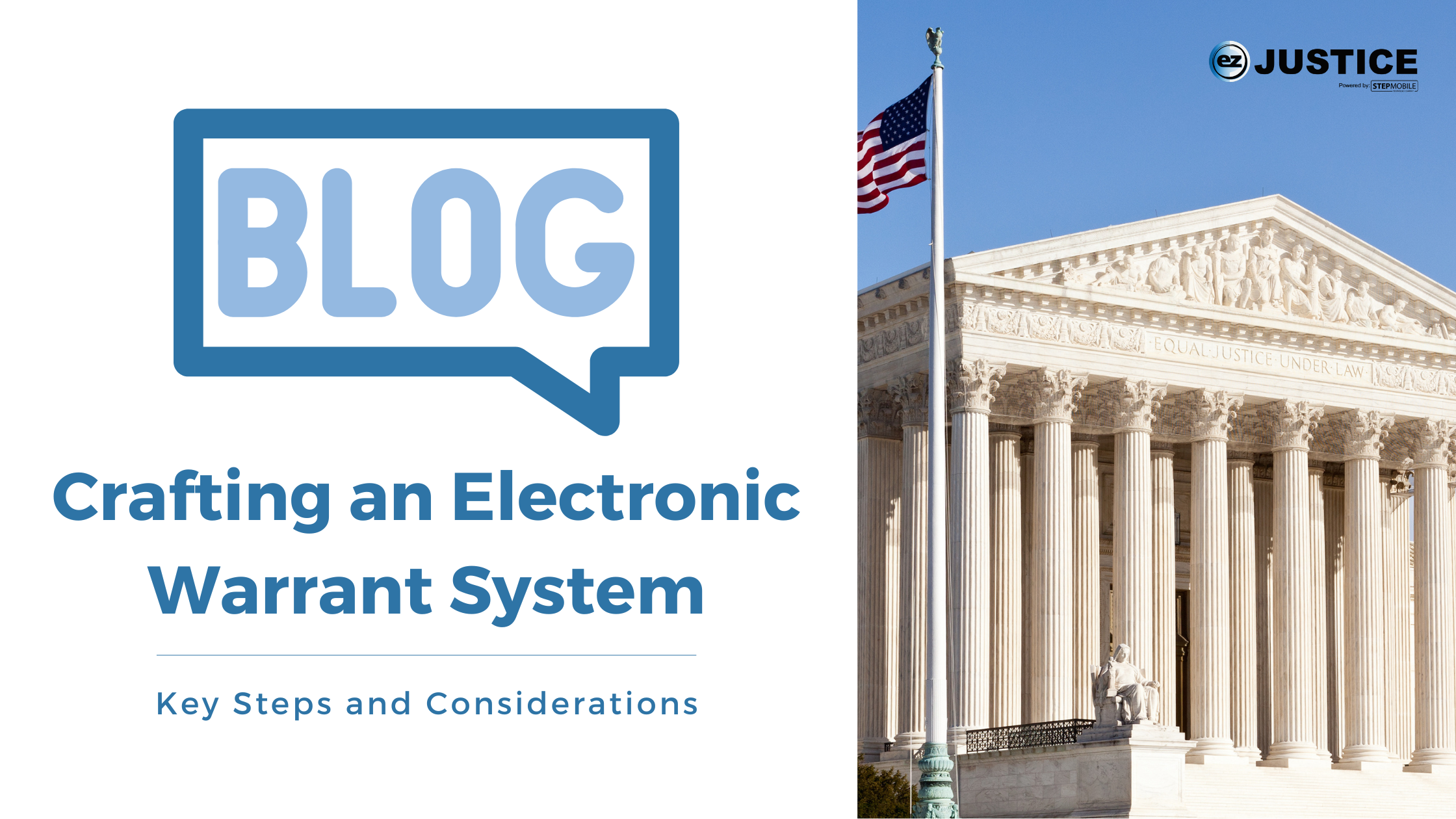2 min read
Crafting an Effective Electronic Warrant System: Key Steps and Considerations
Lauren Thompson : Jul 26, 2024 2:32:29 PM

The justice system is no exception in an age where digital transformation is revolutionizing industries. Implementing an electronic warrant system can significantly enhance the efficiency, accuracy, and accessibility of legal processes. This blog post outlines the key steps to consider when crafting an effective electronic warrant system.
Understanding the Need
Before diving into the technical aspects, it’s crucial to understand why an electronic warrant system is necessary. Traditional paper-based warrant processes can be slow, prone to errors, and difficult to track. An electronic system streamlines these processes, reduces human error, and improves transparency and accountability.
Key Steps in Crafting an Electronic Warrant System
1. Stakeholder Engagement
Engage with all stakeholders, including law enforcement agencies, judicial authorities, IT professionals, and legal experts. Their input is invaluable in understanding the specific requirements and potential challenges.
2. Legal and Regulatory Compliance
Ensure that the system complies with local, state, and federal laws. This includes data protection regulations, privacy laws, and electronic document and signature legal standards.
3. Requirements Analysis
Conduct a thorough analysis to gather detailed requirements. This should cover:
- Functional Requirements: What tasks must the system perform? For example, warrant creation, approval workflows, notifications, and document storage.
- Non-Functional Requirements: These include performance, security, scalability, and usability.
4. System Design
Design the system architecture with scalability and flexibility in mind. Key components typically include:
- User Interface (UI): A user-friendly interface for all stakeholders.
- Database: A secure database to store warrant data.
- Workflow Engine: Manages the flow of warrant requests, approvals, and notifications.
- Integration Layer: Interfaces with other systems, such as law enforcement databases and court management systems.
5. Security Measures
Security is paramount in any electronic system, especially in the justice system. Implement robust security measures, including:
- Encryption: Protect data at rest and in transit.
- Authentication and Authorization: Ensure that only authorized personnel can access and modify the system.
- Audit Trails: Keep detailed logs of all actions performed within the system.
6. Development and Testing
Develop the system using best practices in software development. Conduct rigorous testing, including unit tests, integration tests, and user acceptance testing (UAT). Testing should cover functionality, security, performance, and usability.
7. Training and Change Management
Training is crucial for the successful adoption of the new system. Provide comprehensive training sessions for all users and establish a support system to assist with any issues that arise. Change management strategies should also be in place to ease the transition from paper-based processes to electronic systems.
8. Deployment
Deploy the system in a phased manner, starting with a pilot program. This allows for identifying and resolving any issues before a full-scale rollout.
9. Continuous Monitoring and Improvement
Post-deployment, continuously monitor the system’s performance and gather user feedback. Regular updates and improvements should be made based on this feedback and any legal or regulatory requirements changes.
Conclusion
An effective electronic warrant system involves careful planning, collaboration, and adherence to legal standards. By following these key steps, you can create a system that enhances the efficiency and reliability of the warrant process, ultimately contributing to a more effective justice system.
